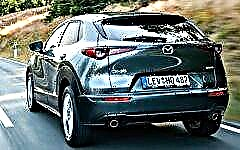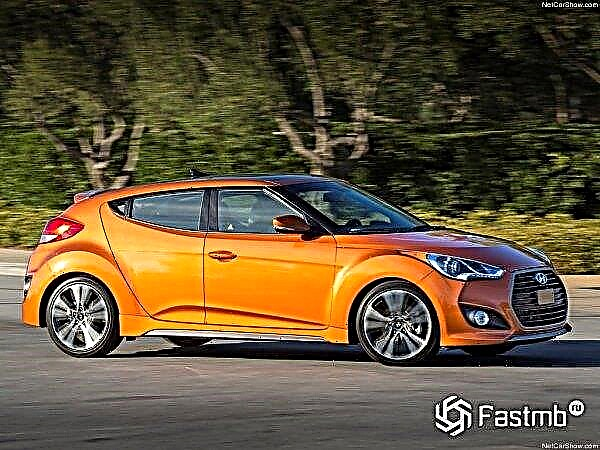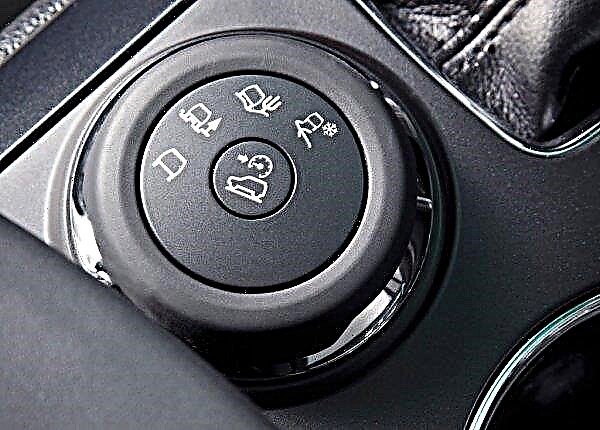

The content of the article:
- Peace for the environment
- Experimenting with green cars
- Hydrogen cars
- Will ICEs be a thing of the past?
More and more European countries are thinking about the problem of environmental damage caused by internal combustion engines. So the Minister of Comprehensive Environmental Transformations of France announced the development of measures to completely ban the operation of cars with an engine of this type. Although his speech contained a plan for 2040, the very concern of an official of such a high level indicates the seriousness of intentions.
Peace for the environment

In Paris, already now, cars and motorcycles manufactured before 1997 are not allowed on the central streets, so as not to poison the capital's air with their exhaust. Violators are punished with a fine of up to 70 euros.
Earlier, the Norwegian government also raised this topic, and 4 main parties have already expressed their approval on the banning bill. If the rest of the deputies agree with their arguments, then in this northern country, internal combustion engines on cars will cease to be installed even earlier - by 2025. Paradoxically, hybrids combining internal combustion engines with an alternative engine may also be banned, although Norway is currently the leader in their sales. Automakers will have to completely replace the engines in their models with hydrogen or switch to the production of electric vehicles.
The above countries are ready to join the Netherlands, Germany, as well as several states of North America. Each of them operates within the framework of the implementation of the Paris Climate Agreement, which calls for a reduction in carbon dioxide emissions of up to 95%. According to experts' calculations, a ban on cars with internal combustion engines will greatly contribute to this good mission, since such vehicles produce about 1/5 of all global emissions.
Experimenting with green cars

The hype around the global transportation plan has forced the public, analysts and engineers to dive deeper into the issue of automobile manufacturing. Despite the fact that now 97% of all European cars are equipped with an internal combustion engine, almost all major automakers have thrown maximum resources into the production of electric vehicles. Volkswagen alone plans to roll off the assembly line up to 3 million of these cars a year in the next decade. And Daimler is designing an entire line of electric vehicles, consisting of two sedans and two SUVs. The largest consulting company PwC predicts that by 2028 the European car market will consist of 30% of electric vehicles. 28% will remain for classic gasoline and diesel engines, and the remaining 14% will be evenly distributed among other experimental modes of transport.
Back in the Soviet Union, engineers tried to experiment with a variety of energy storage devices, achieving savings of 45%. The idea of the irrationality of the automobile mechanism has long troubled scientific minds. Indeed, what's the point of wasting braking energy to heat up the air and the braking system. It is much wiser to develop a kind of storage device for it, in the capacity of which they even tried to use a compressing gas. Unfortunately, all similar schemes of previous years turned out to be too primitive, not suitable for mass use. But the thought of a hybrid car that can store the energy generated during braking in special batteries was seriously puzzled by engineers and scientists from many countries.
The first serious development in this area can be called the Toyota Prius, which was released in 1997. It had a 1.5-liter gasoline engine that worked in a clever combination with an electric motor and generator. Together, this entire structure was connected in a planetary gearbox and regulated by extremely sophisticated electronics, and the resulting energy was stored in a hybrid nickel-metal battery.
Now it is strangely perceived information that the Prius used a generator and an electric motor separately, while modern electric cars combine them in themselves. The novelty, developed by Toyota, was received with enthusiasm by the public, especially in the wake of a zealous struggle to protect the environment. The benefits of the car were obvious:
- environmental benefits,
- savings demonstrated during tests in city mode,
- price comparable to traditional gasoline representatives.
The "pioneering" effect was so great that people preferred to ignore the shortcomings, although they were no less obvious:
- The battery, along with all the other essential electric luggage, weighed the car up by an additional 300 kg, which, during stable movement on the highway, became useless cargo. Although the savings have been proven empirically, ordinary car owners who have become the owners of a complex and heavy unit did not feel a tangible reduction in fuel consumption at all.
- State support aimed at increasing interest in the new environmentally friendly transport caused negative feelings among the majority of citizens. Since the owners received tax breaks and certain subsidies for the purchase and operation of hybrids, the budget had to be replenished by increasing taxes for other motorists who prefer traditional cars.
- To meet the growing demand for electric vehicles, a separate industry must be created to provide the automotive industry with sufficient batteries. And in parallel, the problem of disposing of batteries that have been used up should be solved, so as not to lead to an environmental disaster again.
In the meantime, the picture with hybrid cars can be described as a rented residential building with communications, but without any infrastructure, on which to work for many years to come.
A rechargeable hybrid can become an intermediate stage in the transition from internal combustion engines to more advanced transport. By the very essence of the design, this is the same electric car, which, in the event of an extremely low battery discharge, starts a small ICE, which quickly recharges the main engine. Chevrolet and Opel worked on similar models, but sales did not show impressive results. The lack of interest was due to the fact that the space given for the internal combustion engine and gas tank could be filled with an additional battery to get a real, full-fledged electric car. In fact, it turned out not very clear and not the most functional combination, which did not find a response in the hearts of motorists.
Hydrogen cars

During the Great Patriotic War, using the example of barrage balloons powered by a hydrogen engine, it was decided to use this gas to replace the classic internal combustion engine. The measure would have been salutary in the face of a widespread shortage of gasoline, especially in besieged Leningrad, where the situation was catastrophic. Although the hydrogen engines fell into disrepair too quickly, the fuel itself was consumed significantly more economically.
The baton was taken over by Japan - the first production hybrid car on hydrogen was produced by the same progressive Toyota. The high-tech Mirai also has the ability to store braking energy in the batteries.Two hydrogen tanks are located at the front and rear of the car and are designed for 60 liters each, which allows you to cover a distance of 650 kilometers at a speed of 180 km / h without refueling.
The machine is environmentally friendly, quiet, and the only product of its operation is the resulting water. Accordingly, the price of a unique model reaches 60 thousand dollars, even taking into account all tax breaks and other subsidies.
However, there is always at least some drawback. In this case, it is not a well-developed system for producing hydrogen. If it is obtained by electrolysis, then the energy expended in large volumes for its production is more practical to directly run into an electric car.
Methane could be used, but it is a non-renewable natural resource, for the conservation of which environmentalists and scientists are actively fighting.
Will ICEs be a thing of the past?

At the moment, we have to admit that if we replace all existing cars running on a standard internal combustion engine with electric cars, then even all the power plants in the world will not be enough to charge them.
This is followed by the already mentioned problem of mass production of compact, capacious car batteries with their subsequent disposal.
Thus, in the next few years, a rational alternative to the good old ICE is not foreseen. All available infrastructure - industrial, social, economic - is too tightly tied to the use of oil. Of course, one would like to hope that the world's best minds will figure out how to avoid the complete destruction of all natural resources. But all of the ongoing experiments of leading car manufacturers demonstrate an unwillingness to switch to alternative modes of transport.











